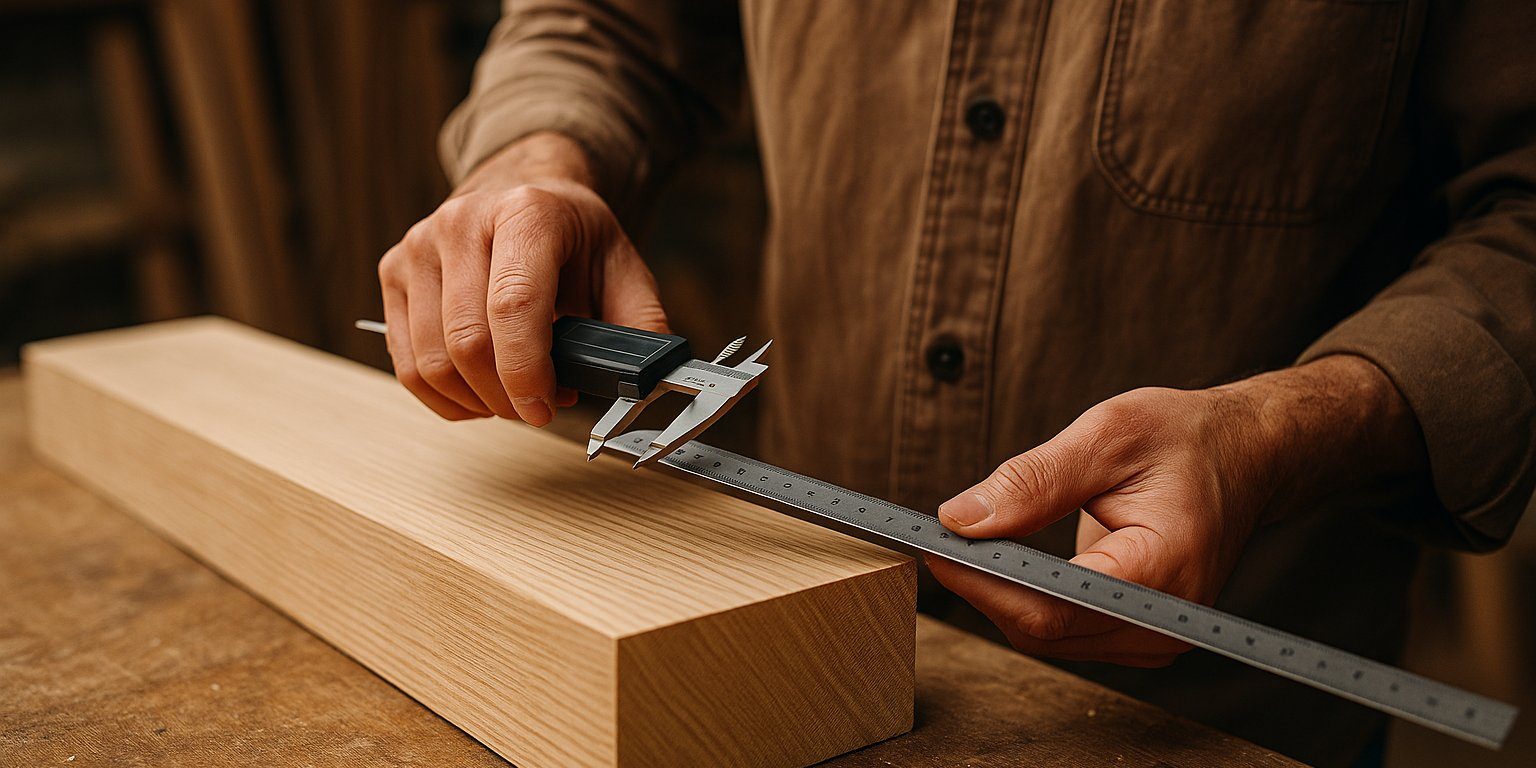Precision in Woodworking: Mastering the Art of Measuring Wood Thickness
Wood is an incredibly versatile and valuable resource that plays a pivotal role in a wide range of industries, from construction to furniture making and handcrafted creations. Whether you’re building sturdy structures or crafting beautiful furniture, understanding the importance of wood thickness is essential for ensuring the durability, strength, and quality of the final product. For a leading wood supplier like Creatimber Global Sdn Bhd, precision in wood measurements is vital in delivering high-quality products to customers across Malaysia.
Why Wood Thickness Matters
Wood thickness is a critical factor in woodworking, as it directly influences the material’s strength, load-bearing capacity, and overall stability. For instance, in furniture making, using wood that is too thin could compromise the structural integrity of the piece, causing it to warp or break over time. Similarly, in construction, using wood that is too thin for beams or supports can compromise the safety of an entire structure. Properly measuring and understanding the ideal thickness of wood is crucial to ensure the material can withstand stress and perform as intended.
Beyond stability, wood thickness also affects how easy or difficult it is to work with. Thin wood is generally easier to cut, sand, and finish, while thicker wood requires more advanced tools and techniques to process effectively. The right thickness ensures smooth operations and helps woodworkers achieve their desired outcomes with efficiency and precision.
The Essential Tools for Measuring Wood Thickness
To measure wood thickness accurately, it is essential to use the right tools. Below are some common and highly effective options that woodworkers and manufacturers across Malaysia rely on:
- Calipers (Digital or Sliding Calipers)
Calipers are one of the most reliable tools for measuring wood thickness. Digital calipers provide easy-to-read electronic displays, while sliding calipers require manual reading but still offer high accuracy. These tools are excellent for measuring not only thickness but also the width and depth of wood. For precise results, ensure that the calipers’ jaws fit snugly around the wood surface, keeping the measurement parallel to avoid errors. - Thickness Gauge (or Thickness Meter)
A thickness gauge is a specialized tool designed specifically for measuring wood thickness. It is especially useful for those requiring precise measurements across different thicknesses. Common in industrial applications, thickness gauges work by measuring the distance between the wood’s surface and the point of contact on the tool. These gauges offer the precision needed for high-end wood processing. - Steel Ruler or Straightedge
A steel ruler or straightedge is a more basic yet functional tool for measuring wood thickness. While it doesn’t provide the same level of precision as calipers or a thickness gauge, it is a great option for larger measurements or when high precision isn’t as critical. Simply place the ruler on the wood and measure the difference between the two ends for a quick measurement. - Micrometers
Micrometers are precision measuring tools often used when working with very thin wood or when extremely detailed measurements are necessary. Micrometers offer even greater accuracy than calipers and are used in high-end woodworking and manufacturing projects where precision is paramount.
Key Considerations When Measuring Wood Thickness
While measuring wood thickness seems straightforward, there are several factors to keep in mind to ensure that measurements are as accurate as possible:
- Selecting the Right Measurement Location
To avoid measurement errors, always choose a stable, flat surface for taking measurements. Wood can warp or become uneven due to natural factors or mishandling during processing, so ensure that the tool is in full contact with the wood’s true thickness. - Effects of Temperature and Humidity
Temperature and humidity levels can significantly impact the size of wood. Wood expands in high humidity and contracts in dry conditions. To get the most accurate results, let the wood acclimatize to the ambient environment before taking measurements, particularly if you’re measuring wood in varying humidity or temperature conditions. - Multiple Measurements
To increase measurement accuracy, take multiple readings at different points on the wood, especially if it’s large or irregularly shaped. Wood thickness may vary across different areas, so averaging several measurements will provide a more reliable overall result.
Conclusion: Unlocking the Potential of Wood with Precision
Measuring wood thickness is more than just a basic task—it’s an essential skill that directly influences the success of any woodworking project. Whether you’re crafting bespoke furniture, constructing robust buildings, or creating intricate wood-based crafts, accurate measurement of wood thickness ensures that your materials meet the necessary standards for strength, functionality, and aesthetic quality.
For professionals in Malaysia, mastering the art of wood thickness measurement is invaluable. At Creatimber Global Sdn Bhd, we are committed to providing the highest-quality wood products, ensuring that every piece of wood meets precise specifications. With the right tools and techniques, you can unlock the full potential of your materials and bring your woodworking projects to life with confidence.






